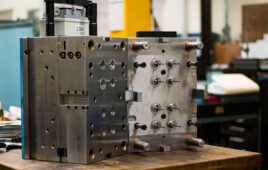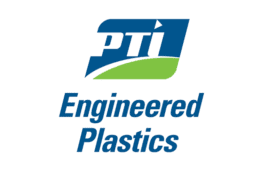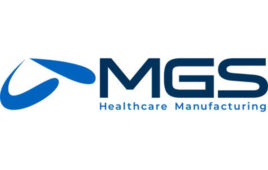Medical device manufacturers can produce high-performing, complex geometric parts and components for surgical instruments at high volumes cost-effectively using a metal injection molding (MIM) process. This flexible, hybrid technology can deliver high-quality parts consistently using a single manufacturing process.
Steve Santoro, Micro

(Image courtesy of Micro)
Demand for lightweight, disposable surgical devices has been increasing as hospitals see a distinct cost advantage for off-the-shelf, single-use products that don’t require sterilization. Disposable sterile devices can also help minimize risk of infection.
CMOs and their original equipment manufacturer partners (OEMs) can work together to address changing market needs with innovative technology, and MIM can help manufacturers meet the increased demand.
MIM doesn’t replace machining, but it offers distinct advantages for certain high-volume, high-precision projects in which parts may be smaller and require more maneuverability along with having strong mechanical properties.
The MIM process
MIM integrates the shaping capability of plastic injection molding and the materials flexibility of conventional powder metallurgy to efficiently produce small, complex parts at high volumes, using high temperature and pressure. The process uses combinations of metal powder and plastic binders that are blended and compounded so that an injection-moldable feedstock can be produced to fabricate the green part.
Using an injection molding machine, the parts produced are then subjected to a binder-removal process. Depending upon the type of binder used, either thermal or solvent, thermal debinding is applied. After debinding, the parts go through a sintering process to ensure densification, alloying, optimal mechanical properties and correct geometry. Newly molded parts are the shape of the final part but larger. The sintering process allows controlled shrinkage, usually in the range of 15%, to achieve full density. The end result is a net shape part. Post-processing may be needed to arrive at the final part.
MIM versus machining
MIM and traditional machining each have advantages and disadvantages depending on each project scope and requirements. MIM allows components to be produced in a single manufacturing process, but a mold is needed to make the green part. Machining and other technologies typically require lower tooling cost and lower lead time upfront but incur higher piece-part prices due to processing times. MIM may have several advantages when considering the following:
- Volume — MIM is cost-effective when large volumes are needed and lends itself well to automation in which high volumes, tight tolerances and consistent quality are required. Machining is more cost-effective for lower production-volume runs. With MIM, the biggest cost is setup to create the mold, but the cost can quickly be recovered when amortized over high-volume runs.
- Material — MIM allows for a variety of materials and flexibility to customize material compositions to meet an OEM’s requirements. Selecting the right materials and feedstock composition are critical factors for success. Compositions may be stainless steels, low alloy steels, carbon steels, Ni-alloys, tool steels and tungsten alloys. The two most common in surgical instruments are 316 stainless steel and 17-4 precipitation-hardened stainless steel. The choice is driven by the need for tempering, which is possible with 17-4PH 400 series stainless. It is used when hardness is the priority, but may have lower resistance to corrosion and staining. MIM also produces less waste and scrap and requires smaller material inventories, which can help reduce costs.
- Properties — MIM is best suited for very small, high-performing precision products and parts with tight tolerances and consistent dimensions over high-volume runs. Components can achieve 95% to 98% of wrought material density at a much lower cost.
- Design complexity — MIM is ideal for producing complex-shaped components with complicated design geometry, eliminating the need for potentially high-priced machined components or welded assemblies. It also allows significant design freedom that can be incorporated in one step.
Early collaboration
An experienced CMO partner can help OEMs select materials, optimize designs and ensure uniform parts with dimensional repeatability. Collaboration early in the development cycle can ensure a component produced through metal injection molding meets the form-fit-function requirements.
Engineers with expertise in both MIM and machining processes can suggest design modifications and provide input to get the best performance out of a product, no matter what technique is ultimately used. An experienced CMO partner can work with their OEM customers to factor in design considerations upfront that can save time and costs.
Steve Santoro is EVP of Micro, directing corporate technical and commercial teams. He previously held high-level operations, sales, engineering and general management positions, and is a charter board member of the School of Applied and Engineering Technology at the New Jersey Institute of Technology.
The opinions expressed in this blog post are the author’s only and do not necessarily reflect those of Medical Design and Outsourcing or its employees.




